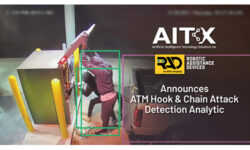Are You Ready for Convergence 2.0?

One word we are hearing more and more in the physical security space is convergence. Typically, however, the word convergence in physical security means that products that were historically analog-based or digital running on a self-contained network are now being introduced in IP-based versions that can run and be controlled via browser interface.
Still, these diverse systems have proprietary platforms and do not interoperate or communicate with other manufacturers’ (or even their own) systems in other areas of physical security, much less with IT security. The convergence they are referencing is only a part of the bigger picture that will have to be addressed in the long run.
Profound Events Change the Nature of Security Analyzing
how we got where we are today is useful for determining how we might get where we need to be in the future.
The history of physical security is as old as the history of civilization. As long as there have been people on earth, there has been a need for them to protect the goods, places and other people around them. Earliest history shows that societies built walls and armies, and people of means used guards and weapons to control access to their property and to protect what they had.
In more modern times, the post-World War II era was the beginning of a technology revolution that spanned the globe and changed the paradigm of business. With the development of electronic capabilities and applications came the growth of physical security as an industry unto itself, with many providers rushing in to provide their own proprietary systems.
As businesses grew from one to many physical locations, these providers continued to install the systems with which they were familiar, each as a standalone system.
The past decade has profoundly changed the way businesses look at physical security and the need for risk management at the corporate level. The emergence of the Internet, the events of 9/11, Hurricanes Katrina and Rita, and corporate fraud scandals have brought about the need for businesses to make fundamental changes in their operations.
These changes are aimed at maintaining best practices in the corporate environment, keeping their premises, personnel and property safe, and avoiding the possibility of personal or corporate liability from the government. Physical security is an important part of this new charter, from both the standpoint of corporate governance and for protection of assets and business continuity.
Haphazard Deployment Results in Too Many Silos
With the recognition of the increased importance of physical security came the growing recognition of the need for communication between the disparate systems that had been installed over time, along with the need to develop policies that would be adopted globally in real-time across all security systems.
When these systems, including computerized physical access control, video surveillance, sensors to detect fire, carbon monoxide, etc., were initially put into place, interoperability was not an issue that was fully considered. Corporate managers were focused on top-line growth of the companies, not foreseeing that their methodology of securing physical location and their employee base could one day become management challenges.
Unknowingly, these managers were creating a tremendous problem of disparate proprietary systems across enterprises with multiple business processes solving the same business issue at various locations. The deployment through time of these siloed systems opened the door for myriad security breaches.
For example, a terminated employee in one access control location could easily walk to another location managed by a different access control system and gain an illegal entry to corporate premises. Likewise, a forced door entry or a surveillance breach alarm would be handled locally and would not automatically be reported to corporate security in real-time. With no standardization, there was no centralized organizational control and management of disparate systems.
Explosive corporate growth and Internet and Internet protocol (IP)-based networking only exacerbated the issues.
4 Pain Points for Security, Business, IT to Address
While it is clear that action must be taken to remedy the situation, there has been no one solution that would solve the problem. Any processes implemented by management are manual in nature and dependent on individuals taking actions in response to physical security incidents.
As a result, there is no way to put global policies into place automatically, nor is there a holistic overview of incidents and events. The cost of maintaining continuity of operations across disparate systems and locations is immense, along with the exposure to risk and liability.
The four pain points resulting from the divergence caused by the evolution of physical security, the need for corporate governance and the growth of IT are as follows:
If you enjoyed this article and want to receive more valuable industry content like this, click here to sign up for our FREE digital newsletters!

Security Is Our Business, Too
For professionals who recommend, buy and install all types of electronic security equipment, a free subscription to Commercial Integrator + Security Sales & Integration is like having a consultant on call. You’ll find an ideal balance of technology and business coverage, with installation tips and techniques for products and updates on how to add to your bottom line.
A FREE subscription to the top resource for security and integration industry will prove to be invaluable.







